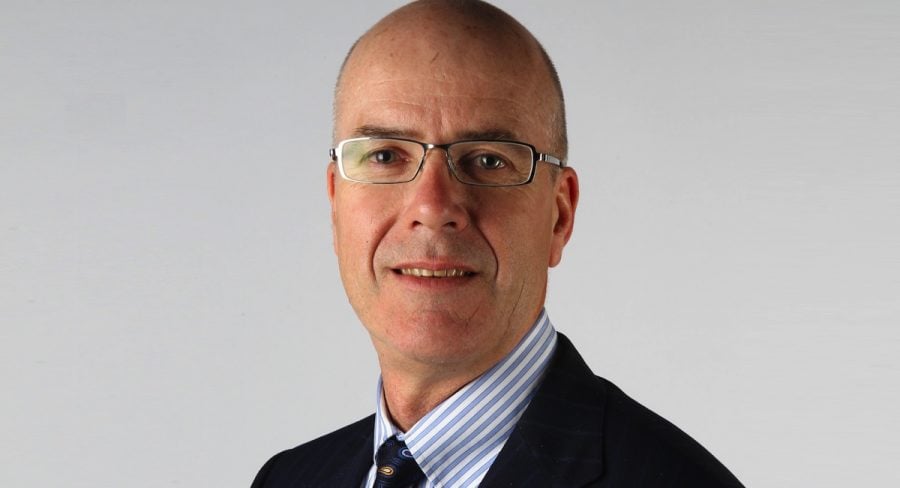Greg Hywood has been a regular visitor to the Macquarie Australia conference as CEO of Fairfax Media.
This year he presented another deep dive into the media company’s strategy.
Below are some of the highlights from his presentation.
In the past we have focused on the transformation of Fairfax, from a traditional media model with a large fixed-cost base to a modern, diversified portfolio of multimedia and digital assets with a flexible, lower cost base.
Transformation is one of those words that gets thrown about. In our case the changes have quite literally been transformational.

Today’s presentation outlines our growth and value creation agenda for our portfolio of leading information brands, marketplaces and entertainment, assets that connect with 70% of Australians and 90% of New Zealanders.
We have hit a new phase in the development of the business. We have taken big decisions around cost. We have taken big decisions to create businesses such as Domain and Stan. Our continued focus is on organic value creation opportunities, going for growth, maximising our existing core assets.
Between 2012 and 2018, newspaper industry advertising revenue as a percentage of the total Australian advertising pie went from 23% to just 8%. To date, that’s been a $300 million average annual reduction in revenue across the industry.
In the face of that profound industry disruption, setting ourselves on the path of originating commercially viable new media has proven correct.
We are achieving our goal of sustaining independent journalism’s public good while at the same time delivering shareholder value creation. In the past six years we have built around $1.6 billion of value. We are focused on accelerating value creation.
First to our Domain real estate media and services business, a leading platform at the centre of the Australian property ecosystem, delivering a compelling consumer and agent experience.
A year ago we discussed at this forum our strategic intent to separate Domain into a new ASX-listed entity. We achieved that milestone in November 2017. Our 60% shareholding remains a key strategic asset with strong fundamentals.
Highlights of Publishing’s contribution to the delivery of Fairfax’s strategy include:
• Growing digital subscribers of The Sydney Morning Herald, The Age and The Australian Financial Review to 283,000;
• Transforming through simplification and business model innovation resulting in more than $500 million of annualised cost savings; and
• Building value by growing our quality, highly engaged audiences from 10 million to 13 million.
The new revenue model underpinning our publishing business is multifaceted and moves well beyond the traditional reliance on advertising, print subscriptions and circulation. It continues to leverage premium brands, quality journalism and audiences that have never been larger in the company’s history.
Australian Metro Media is focused on strengthening earnings and long-term growth by driving digital performance and maximising the print contribution. Metro operates six main capital city and national mastheads, and associated Life Media brands, attracting an audience of 11 million across platforms. Revenue is concentrated in that small number of mastheads, with contribution of digital and other non-print revenue at 35% of total.
Australian Community Media’s focus is on optimising the operating structure to grow digital and maximise cash flows of low capital-intensive and profitable print. ACM comprises 13 daily and more than 130 non-daily regional titles, nine community titles and 10 specialist agricultural titles. Revenue is diversified among mastheads with the top five contributing only 28% of total revenue. Contribution of digital and other non-print revenue is modest at 7% of total.
In New Zealand, our strategic focus is on leveraging the enormous power of Stuff into growing digital, transactional and advertising revenues while rationalising the long tail of print. Stuff operates New Zealand’s leading national digital news site Stuff.co.nz, nine large daily regional titles, 11 national titles and sites, along with more than 50 community titles. Revenue is relatively concentrated with the top five mastheads contributing half of total revenue. Contribution of digital and other non-print revenue is 17% of total and growing rapidly.
In New Zealand, the centrepiece of the audience and revenue generation model is Stuff.co.nz, which is the leading local digital platform nationally. Stuff group reaches 90% of the population. The scale of this audience and reach provides Stuff with compelling competitive advantage.
Our strategy to grow has delivered an increase in the group’s digital and other non-print revenue as a percentage of total from 23% to 39% in the past four years. Print is generating strong cash flows, which should continue for some time given the industry back-end cost initiatives under way.
Our strategy to transform has delivered net debt reduction of close to $1 billion resulting in a strong balance sheet with a net cash position for Fairfax’s 100%-owned entities.
Our strategy to build value has delivered Fairfax shareholders $1.6 billion in value creation.
In conclusion, Fairfax is thriving.
